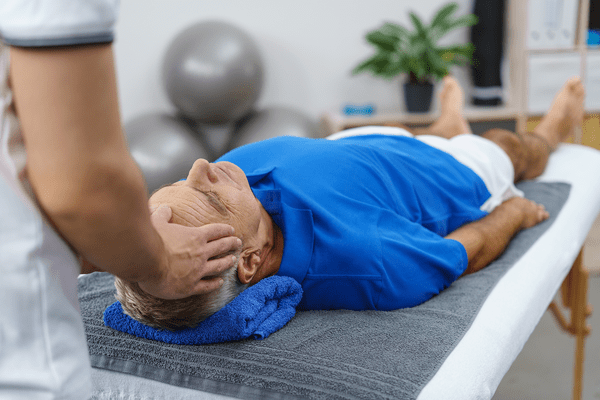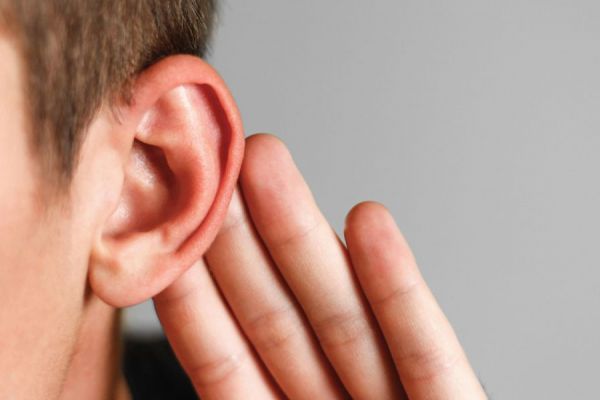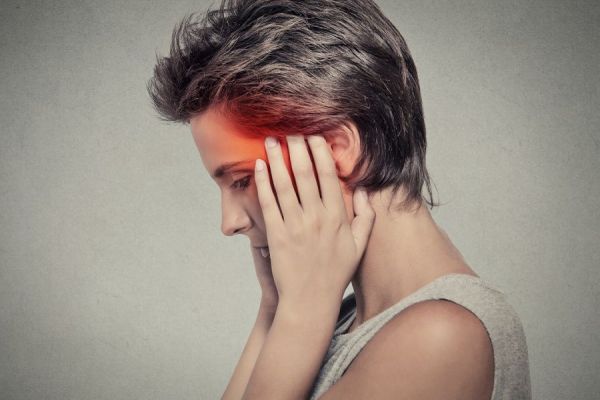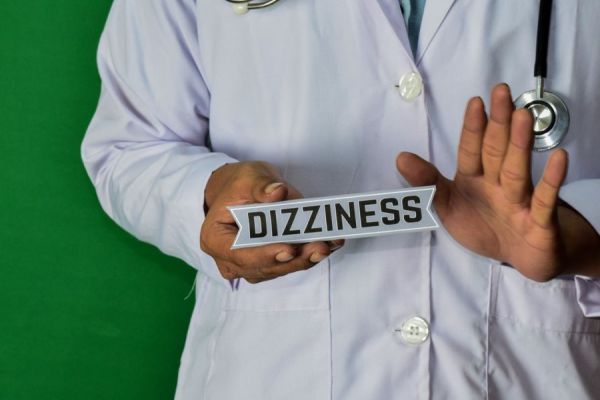What you need to know about BPPV, the most common cause of vertigo
Author Details
Reg. PT., M.Sc.PT., H.B.K. | National Director of Program Development, Specialty Services
Do you experience spinning sensations or unsteadiness associated with vertigo? The most common cause of vertigo is BPPV (Benign Paroxysmal Positional Vertigo), where some of the crystals we all have in our inner ears get into the wrong place and make you or the room around you appear to spin with certain head positions.
While common, BPPV is frequently misdiagnosed or treated incorrectly. When it is diagnosed and treated correctly, this condition is often resolved in only 1-3 treatments.
On September 22nd, I joined Marina Forester and Manny Villatoro, Lifemark vestibular physiotherapists, for an online discussion about vertigo, the vestibular system, the symptoms of BPPV, and how vestibular therapy can help.
Below are 5 key takeaways from this discussion. Play the video above if you’re interested in watching the full webinar.
5 key takeaways
1. What does vertigo mean?
Vertigo is the sensation of movement or spinning, whether that’s you moving or the environment around you. It’s important to know that vertigo is a symptom not a diagnosis.
2. What is BPPV?
In addition to hearing, our inner ears are motion and position sensors. We all have calcium carbonate crystals (called otoconia) in one portion of our inner ears as part of the normal mechanism that allows us to detect head movement. However, if some of them fall out of their correct chamber and get into 1 or more of the fluid-filled tubes, an individual can experience a brief spinning sensation.
BPPV occurs because the affected ear tells the brain that the head is moving while the normal ear says that it’s not, which is a big error signal. The brain will try to move the eyes in a manner that would be appropriate if you were actually moving, but since you’re not, the eye movement will make it look and feel like you or your surroundings are moving.
3. What are the symptoms of BPPV?
One of the key symptoms you might experience is vertigo, the sensation of motion, either of yourself moving or movement taking place around you. The vertigo is brief, lasting seconds up to 1-2 minutes and is only brought on by head movement. For example, it may happen when you get in or out of bed, roll over on your side, or when bending over or looking up above you.
Other symptoms include nausea, feeling unsteady or off balance, sweating, or an elevated heart rate. Some people might feel normal in between bouts, while some people might feel slightly dizzy. It is important to remember that just because you don’t experience severe vertigo doesn’t mean you don’t have BPPV. It can be mild, particularly if you are changing positions slowly.
4. What causes BPPV?
The area where the crystals are located isn’t particularly stable as the crystals are constantly being shed, dissolved and replaced. As we age, the crystals tend to start breaking down, making it easier for pieces to escape the gel that normally holds them in the correct chamber.
The most common onset is just ‘out of the blue’ and we often hear people say that they went to bed one night feeling fine and when they went to get up the next morning, everything started spinning when they rolled over or sat up. Other risk factors for occurrence include:
- Increasing age
- Head injury, concussion
- Female gender
- Vitamin D deficiency
- Migraine
- Osteoporosis
- Higher total cholesterol
5. Can BPPV be so severe that it can last for 12 hours or more?
There is a certain type of BPPV that can cause prolonged vertigo beyond the normal seconds to a minute or so, but for it to last longer you would have to be voluntarily keeping your head in the position causing the spin. You would be able to ‘turn it off’ by taking your head out of that position, so vertigo for 12 hours or more would be from something other than BPPV. If you can’t get it to stop by changing your position or resting in one position, it is likely that is it not BPPV.
How can vestibular rehabilitation help?
If you’re experiencing symptoms of BPPV, Lifemark’s knowledgeable clinicians can help determine if this is the correct diagnosis, where the crystals are, and what variant you have. Then they’ll know what treatment maneuvers to take you through to correct the condition. When effectively treated and diagnosed, BPPV can normally be resolved in 1-3 treatments.
If our extensive assessment determines that your symptoms are coming from one of the many other causes of dizziness, your Lifemark therapist will help you learn about your condition and develop a customized treatment plan. This may involve a combination of in-clinic and virtual sessions, including techniques that may help reduce or eliminate symptoms, improve focus while moving, balance training, hands-on treatments, diet and lifestyle advice and at-home exercises.
To learn more about vestibular therapy, check out our services page. If you’re interested in booking an assessment with a vestibular therapist, you can do so online or find a clinic near you.
Author Details
Reg. PT., M.Sc.PT., H.B.K. | National Director of Program Development, Specialty Services




































We can help you move and feel better.
Book an appointment today.